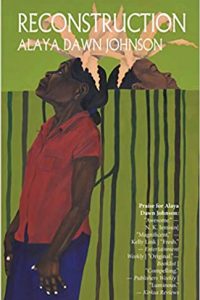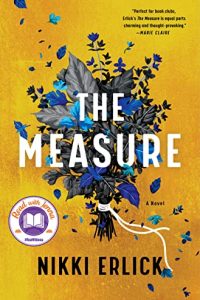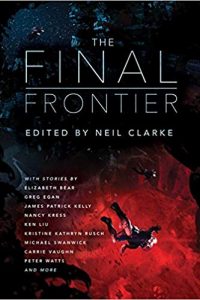Paul Di Filippo reviews Laline Paull
Everything old is new again. Or maybe that’s just the feeling one gets when one has been a reader of science fiction contiuously for the past fifty years, as I have. (First adult SF book encountered: Raymond Jones’s The Year When Stardust Fell in 1964.) Old themes, tropes, riffs and plots recirculate in endless cycles, accreting new bits and sophistications, but always revealing their essential lineaments through whatever new clothes they may don. Oh, sure, once in a blue moon some radical new conceit arises, such as the Singularity, and for a time the field is refreshed, before settling back to the familiar churn. But the essential recycling and retrofitting and reverse engineering continues generally unabated.
Now, this is not to say that there is no pleasure in the new avatars of old concepts, the reimaginings of what was once previously imagined, the fresh couture over old bones. That would be like saying that no newborn infant has any potential to amuse or enlighten, simply because there have already been born X billions of people on the planet. Yet just as every child is unique, so is every child also categorizable into broad predictible patterns of character and behavior. No shame there, just human combinatorial realities. The space of human behaviors is not infinite.
All of this preface by way of approaching Laline Paull’s debut novel, The Bees, which imagines a sentient insect society.
In 1951 appeared L. Sprague de Camp’s Rogue Queen, the groundbreaking story of humanoid aliens whose culture and patterns of behavior resembled those of terrestrial bees. A little over twenty years later, in 1973, Frank Herbert gave us Hellstrom’s Hive, about actual humans engineering themselves along similar lines. (I’m shamelessly omitting from this lineage 1959’s cinematic marvel, The Wasp Woman.) Till now, these two excellent books seemed to have the notion pretty well covered, almost precluding further genre investigation of the topic. But I doubt that Paull, with her non-genre background, has ever heard of these novels, and so she’s felt unburdened in her foray into the theme. Good for her!
Paull’s lateral masterstroke consists in this: instead of imagining humans as insects, she’s chosen to contemplate insects as humans. Set inside a typical bee hive, her book, in the taxonomy of The Encyclopedia of Fantasy, is an “Animal Fantasy,” a la Watership Down. “A pure AF is a tale which features sentient animals who almost certainly talk to one another and to other animal species, though not to humans, and who are described in terms which emphasize both their animal nature and the characteristic nature of the species to which they belong. A pure AF will almost certainly be set in the real world, and will usually teach its readers some natural history…”
After a short prologue where two humans stop to chat by a bee hive, we are dropped—invisible miniaturized observers as it were—into that hive, to witness the messy birth of Flora 717, destined by her genes to be a simple sanitation worker, but also possessing some variant attributes—size, strength, smarts—that seem to hint at a larger scope of existence. Ushered into the hive corridors by Sister Sage, one of the elite bees, Flora is given some anomalous nursery tasks for a while. But when she fails a certain test she is mindwiped and sent down to the sanitation corps. Exhibiting courage in battle against Wasps, she is for a short glorious time sent to attend the Queen Herself. Following this, she is allowed the rare privilege for her caste of becoming a Forager. All the while she nurses strange dreams, emotions and ambitions. (While Flora is unique and unusual, she is no destined savior or secret princess in her own right, but has a different, equally vital role to play; this lack of personal, self-aggrandizing High Destiny is refreshing.)
Paull’s accomplishments here are truly myriad and impressive. In no particular order, I would enumerate them thus.
She perfectly walks the line between alienness and humanity. Her bees are at once truly the creatures that they are, and yet also full of familiar human emotions and capabilities. One minute Flora will be on a blossom, unrolling her tongue and storing up pollen in anatomical fidelity to her nature. The next she will be “reading” the scent-stories that are the literary and mythic heritage of the hive and experiencing numinous aesthetic epiphanies. Such a blending of human and non-human attributes might appear parodic or silly in lesser hands, but Paull brings it off brilliantly.
Her prose is a marvel of precision and grace and poetry as well, and above all, sensual. “Her mouth was dry and the base of her tongue felt tight. She wanted a shining drop of water from the cool green groove of a leaf. She wanted the soft velvet slide of petals on her body…” The Falstaffian dialogue of the Drones is just perfect, and in fact the whole drama has a Shakespearean air about it, right down to the fate of the Queen. Paull’s descriptions of nature are vivid and Thoreauvian, or perhaps cousin to Annie Dillard’s Pilgrim at Tinker Creek. Consider, for instance, the moment when Flora is caught outside in the rain, in Chapter Twenty-two. The narrative is intimately and intricately bound up in weather and the seasons.
What to compare this volume to? Besides joining the ranks of other great Animal Fantasies such as those of Richard Adams and Garry Kilworth, it summons up comparisons to Sylvia Townsend Warner’s Kingdoms of Elfin and Jeff Ford’s “The Annals of Eelin-Ok.” There’s a trace of Frank Herbert’s Bene Gesserit order in the lives of the bees, especially when it comes to literally sharing personality simulacra from bee to bee.
What I would not choose to compare it to is any dystopia, as does the reductionist and generally blinkered Publishers Weekly review. Dystopias depict evil, dysfunctional societies organized to benefit an elite and stomp down everyone else. There’s always something a bit arbitrary about dystopias, an artificiality not seen here. The term does not apply to societies that simply exhibit a more stringent and strict set of rules than the United States. Is Saudia Arabia a dystopia? Is Indonesia? I think not, unless we wish to devalue the term entirely. Nor is this the nature of the hive, which is a logical and functional adaptation to genetics and the environment. The bees function as evolution built them to function. No one is pampered, although some existences might seem easier than others. But is the captive egg-assembly-line Queen really privileged, or are the Drones who are subject to Maenad-like slaughter? Is an internal combustion engine a dystopia, because the pistons bear more pressure than the fan belt?
What the hive represents is nothing more nor less than the eternal background of rules and customs against which a strong-willed individual must timelessly rebel. Consider Joyce’s A Portrait of the Artist as a Young Man to be the ultimate template.
What Laline Paull has accomplished here is multivalent: a rumination on nature; a portrait of the struggle between individual and the stifling matrix of society; and a depiction of how humanity might organize itself along different lines. I’d call it, in the end, science fiction at its best.









I was nervous when I started to read this review, and very proud by the end. Thank you for your time, and your insight. Everything a writer could wish for.
Laline Paull